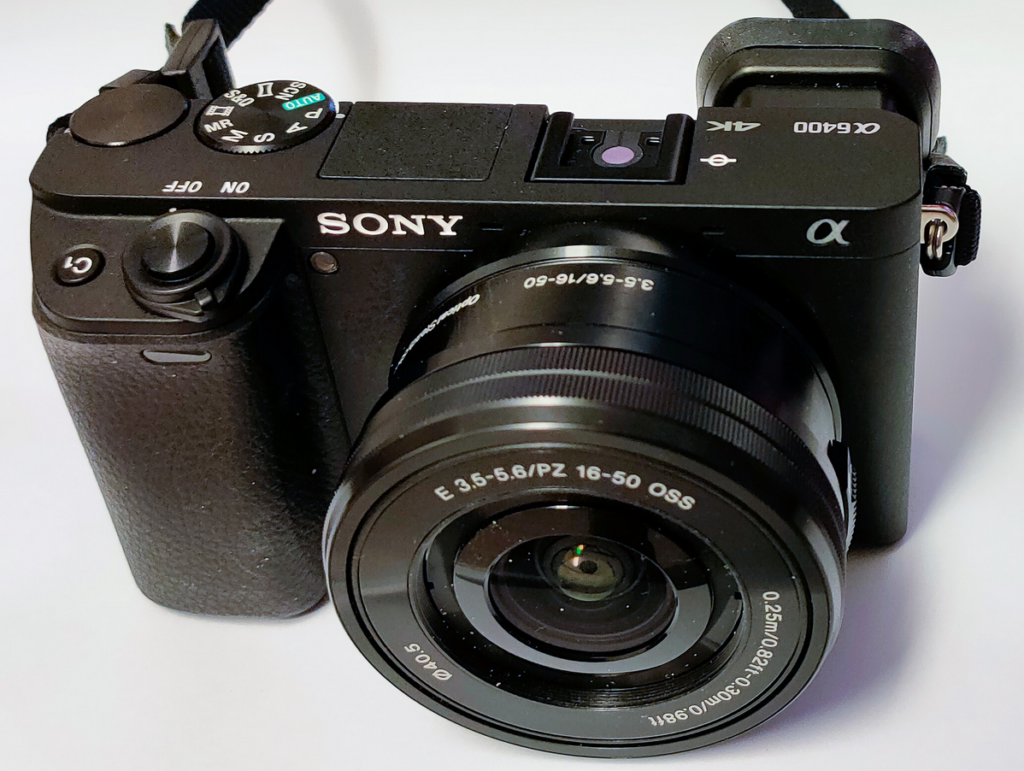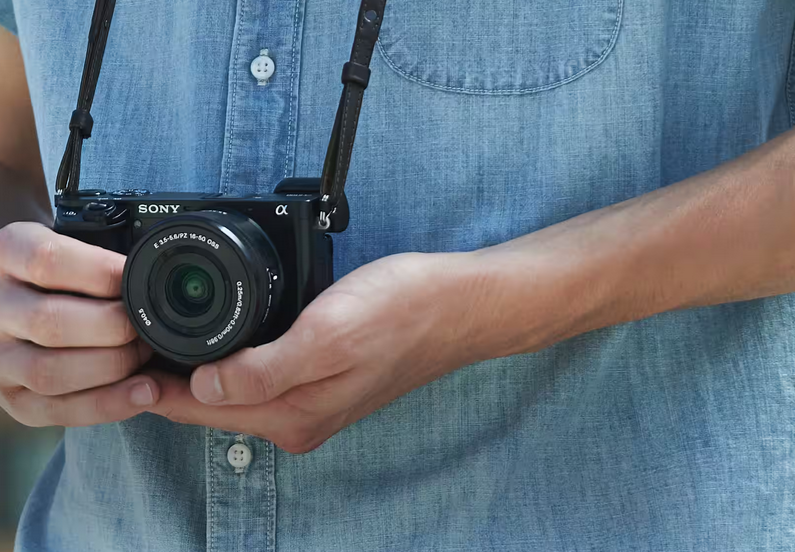Welcome back to FilmmakingElements.com, your ultimate destination for all things filmmaking! In today’s article, we are diving deep into the world of mirrorless cameras as we list the Top 3 Sony a6100 Alternatives.
The Sony a6100 has been a game-changer in the photography and videography industry, thanks to its incredible features, performance, and affordability. But we understand that every creative has unique preferences and requirements, which is why we’ve curated this list of exceptional alternatives that are on par with the Sony a6100 and may even surpass it in certain aspects. So, buckle up and get ready to explore these outstanding options that could be the perfect fit for your next project.
1. Sony ZV-E10

If you are looking for a vlogging camera that offers similar performance and image quality as the Sony a6100, you might want to consider the Sony ZV-E10 as a good alternative. The Sony ZV-E10 is a newer model that is designed specifically for vlogging, with some features that make it more suitable for this purpose than the a6100. Here are some of the main differences and similarities between the two cameras:
Sensor- Full frame or APSC
Both cameras have a 24.2MP APS-C CMOS sensor, which means they have a crop factor of 1.5x compared to full-frame cameras. This means that the lenses will have a narrower field of view and less background blur than on a full-frame camera. However, APS-C sensors also have some advantages, such as lower cost, lighter weight, and faster continuous shooting.
Autofocus and Lens Mount
Both cameras use the same E-mount system, which means they are compatible with a wide range of lenses from Sony and other brands. Both cameras also have a fast and accurate autofocus system, with 425 phase-detection and contrast-detection points that cover almost the entire frame. Both cameras also feature Real-time Tracking and Real-time Eye AF, which can lock on and follow the eyes of humans and animals in both photo and video modes. However, the ZV-E10 has a slightly newer version of the AF system, which has improved color science and skin tone detection.
Design- Dimension and Weight Comparison
The ZV-E10 is slightly smaller and lighter than the a6100, weighing 343g vs 396g and measuring 115.2 x 64.2 x 44.8 mm vs 120 x 66.9 x 59.4 mm. The ZV-E10 also has a more ergonomic grip and a larger record button. The ZV-E10 also has a dedicated button for switching between photo and video modes, as well as a background defocus button that automatically adjusts the aperture to create a shallow depth of field. The ZV-E10 also has a product showcase feature, which allows the camera to quickly switch focus from the face to an object held in front of the lens, which is useful for showing off products or accessories.
Viewfinder and LCD monitor
One of the main differences between the two cameras is that the ZV-E10 does not have a viewfinder, while the a6100 has an electronic viewfinder with 1.44 million dots and 0.71x magnification. This means that the ZV-E10 relies solely on the LCD monitor for framing and reviewing images, which can be problematic in bright sunlight or when shooting at eye level. However, the ZV-E10 has a fully articulated touchscreen, which can flip out to the side and rotate 180 degrees, making it easier to shoot selfies or vlogs. The a6100 has a tilting touchscreen, which can only flip up 180 degrees or down 74 degrees, limiting the shooting angles.
Battery life
The ZV-E10 has a slightly higher battery capacity than the a6100, with 1080mAh vs 1020mAh. However, both cameras have a similar battery life, with around 440 shots per charge for the ZV-E10 and 420 shots per charge for the a6100. Both cameras can also be charged via USB, which is convenient for travelling or extended shooting sessions.
Video Capabilities
Both cameras can record 4K video at up to 30p, or Full HD video at up to 120p. Both cameras also support S-Log and HLG profiles, which offer more flexibility for color grading and HDR output. However, the ZV-E10 has some advantages over the a6100 in terms of video features, such as a 3.5mm microphone jack, a headphone jack, a multi-interface shoe that can support a digital audio interface, and an e-stabilization feature that reduces camera shake in video mode. The ZV-E10 also has a vertical video mode, which automatically rotates the video orientation when the camera is held vertically, making it easier to share videos on social media platforms.
Price
The ZV-E10 is slightly cheaper than the a6100, with a body-only price of $698 vs $748. The ZV-E10 also comes with a 16-50mm power zoom lens for $798, while the a6100 comes with the same lens for $848. The ZV-E10 does not have a dual-lens kit option, while the a6100 comes with a 16-50mm and a 55-210mm zoom lens for $1098.
2. Sony a6400

If you are looking for a camera that offers similar performance and image quality as the Sony a6100, but with some additional features and improvements, you might want to consider the Sony a6400 as a good alternative. The Sony a6400 is a newer model that is designed for enthusiasts and vloggers, with some advantages over the a6100 in terms of weather sealing, viewfinder resolution, video capabilities, and autofocus speed. Here are some of the main differences and similarities between the two cameras:
Sensor- Full frame or APSC
Both cameras have a 24.2MP APS-C CMOS sensor, which means they have a crop factor of 1.5x compared to full-frame cameras. This means that the lenses will have a narrower field of view and less background blur than on a full-frame camera. However, APS-C sensors also have some advantages, such as lower cost, lighter weight, and faster continuous shooting.
Autofocus and Lens Mount
Both cameras use the same E-mount system, which means they are compatible with a wide range of lenses from Sony and other brands. Both cameras also have a fast and accurate autofocus system, with 425 phase-detection and contrast-detection points that cover almost the entire frame. Both cameras also feature Real-time Tracking and Real-time Eye AF, which can lock on and follow the eyes of humans and animals in both photo and video modes. However, the a6400 has a slightly faster AF acquisition speed of 0.02 seconds, compared to 0.02 seconds for the a6100. The a6400 also has a better color science and skin tone detection, which can improve the accuracy and reliability of the autofocus.
Design- Dimension and Weight Comparison
The a6400 and the a6100 have very similar dimensions and weights, with the a6400 being slightly heavier and thicker. The a6400 weighs 403g and measures 120 x 67 x 60 mm, while the a6100 weighs 396g and measures 120 x 67 x 59 mm. The a6400 also has a more ergonomic grip and a larger record button. The main difference between the two cameras in terms of design is that the a6400 is weather-sealed, while the a6100 is not. This means that the a6400 can withstand some dust and moisture, while the a6100 is more vulnerable to environmental damage.
Viewfinder and LCD monitor
Both cameras have a 3-inch tilting touchscreen LCD monitor, which can flip up 180 degrees or down 74 degrees, allowing for easy selfies and vlogging. However, the a6400 has a higher-resolution electronic viewfinder, with 2.36 million dots and 0.71x magnification, compared to 1.44 million dots and 0.7x magnification for the a6100. This means that the a6400 can provide a clearer and more detailed view of the scene, especially in bright sunlight or when shooting at eye level.
Battery life
Both cameras use the same NP-FW50 lithium-ion battery, which can provide around 420 shots per charge for the a6400 and 410 shots per charge for the a6100. Both cameras can also be charged via USB, which is convenient for travelling or extended shooting sessions.
Video Capabilities
Both cameras can record 4K video at up to 30p, or Full HD video at up to 120p. Both cameras also support S-Log and HLG profiles, which offer more flexibility for color grading and HDR output. However, the a6400 has some advantages over the a6100 in terms of video features, such as a microphone jack, a headphone jack, a multi-interface shoe that can support a digital audio interface, and an e-stabilization feature that reduces camera shake in video mode. The a6400 also has a vertical video mode, which automatically rotates the video orientation when the camera is held vertically, making it easier to share videos on social media platforms.
Price
The a6400 is slightly more expensive than the a6100, with a body-only price of $748 vs $598. The a6400 also comes with a 16-50mm power zoom lens for $931, while the a6100 comes with the same lens for $698. The a6400 does not have a dual-lens kit option, while the a6100 comes with a 16-50mm and a 55-210mm zoom lens for $898.
3. Canon EOS R50

If you are looking for a camera that offers similar performance and image quality as the Sony a6100, but with a newer release date and a lower price, you might want to consider the Canon EOS R50 as a good alternative. It has some advantages over the Sony a6100 in terms of autofocus, video features, and battery life. Here are some of the main differences and similarities between the two cameras:
Sensor- Full frame or APSC
Both cameras have a 24.2MP APS-C CMOS sensor, which means they have a crop factor of 1.5x compared to full-frame cameras. This means that the lenses will have a narrower field of view and less background blur than on a full-frame camera. However, APS-C sensors also have some advantages, such as lower cost, lighter weight, and faster continuous shooting.
Autofocus and Lens Mount
Both cameras use a fast and accurate autofocus system, with 425 phase-detection and contrast-detection points that cover almost the entire frame. Both cameras also feature Real-time Tracking and Real-time Eye AF, which can lock on and follow the eyes of humans and animals in both photo and video modes. However, the Canon EOS R50 has a newer version of the AF system, which has improved color science and skin tone detection. The Canon EOS R50 also has a BSI sensor, which can improve the low-light performance and dynamic range of the camera.
The Canon EOS R50 uses the RF mount, which is compatible with a wide range of lenses from Canon and other brands. The Sony a6100 uses the E-mount, which also has a large selection of lenses available. However, the RF mount has some advantages over the E-mount, such as a shorter flange distance, a larger diameter, and a faster communication speed. This can allow for more compact, versatile, and high-performance lenses.
Design- Dimension and Weight Comparison
The Canon EOS R50 is slightly smaller and lighter than the Sony a6100, weighing 375g vs 396g and measuring 116 x 86 x 69mm vs 120 x 67 x 59mm. The Canon EOS R50 also has a more ergonomic grip and a larger record button. The main difference between the two cameras in terms of design is that the Canon EOS R50 is weather-sealed, while the Sony a6100 is not. This means that the Canon EOS R50 can withstand some dust and moisture, while the Sony a6100 is more vulnerable to environmental damage.
Viewfinder and LCD monitor
Both cameras have a 3-inch tilting touchscreen LCD monitor, which can flip up 180 degrees or down 74 degrees, allowing for easy selfies and vlogging. However, the Canon EOS R50 has a higher-resolution LCD monitor, with 1620k dots vs 921.6k dots. This means that the Canon EOS R50 can provide a clearer and more detailed view of the scene, especially in bright sunlight or when shooting at eye level.
Both cameras also have an electronic viewfinder, which can help with framing and reviewing images, especially in bright sunlight or when shooting at eye level. However, the Canon EOS R50 has a higher-resolution EVF, with 2360k dots vs 1440k dots. This means that the Canon EOS R50 can provide a clearer and more detailed view of the scene, especially in bright sunlight or when shooting at eye level.
Battery life
The Canon EOS R50 has a slightly higher battery capacity than the Sony a6100, with 1080mAh vs 1020mAh. However, both cameras have a similar battery life, with around 440 shots per charge for the Canon EOS R50 and 420 shots per charge for the Sony a6100. Both cameras can also be charged via USB, which is convenient for travelling or extended shooting sessions.
Video Capabilities
Both cameras can record 4K video at up to 30p, or Full HD video at up to 120p. Both cameras also support S-Log and HLG profiles, which offer more flexibility for color grading and HDR output. However, the Canon EOS R50 has some advantages over the Sony a6100 in terms of video features, such as a microphone jack, a headphone jack, a multi-interface shoe that can support a digital audio interface, and an e-stabilization feature that reduces camera shake in video mode. The Canon EOS R50 also has a vertical video mode, which automatically rotates the video orientation when the camera is held vertically, making it easier to share videos on social media platforms.
Price
The Canon EOS R50 is slightly cheaper than the Sony a6100, with a body-only price of $629 vs $748. The Canon EOS R50 also comes with a 16-50mm power zoom lens for $798, while the Sony a6100 comes with the same lens for $848. The Canon EOS R50 does not have a dual-lens kit option, while the Sony a6100 comes with a 16-50mm and a 55-210mm zoom lens for $1098.
So that’s it, there you go. These are the best alternatives you should look forward to if you are planning to buy Sony a6100.





